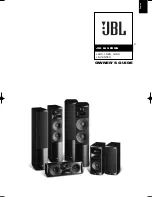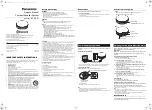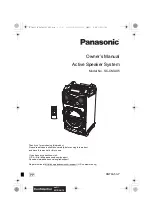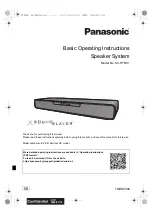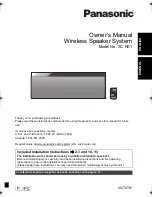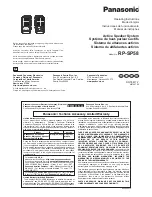
Dispersion Interactions 29
d
IsPersIon
I
nteraCtIons
Controlled Horizontal Dispersion
Your Montis’s launch a 30 degree horizontal dispersion pattern.
This horizontal dispersion field gives a choice of good seats for the
performance while minimizing interactions with side walls (see
figure 9). Make sure both speakers stand exactly at the same verti-
cal angle, otherwise the image can be skewed or poorly defined.
The wave launch of both speakers is extremely accurate in both
the time and spectral domain. Consequently, small refined adjust-
ments can result in noticeable sonic improvements.
Controlled Vertical Dispersion
As you can see from the illustrations, your Montis speakers proj-
ect a controlled dispersion pattern (see figure 10). Each Montis
is a 44 inch line source beginning 13.75 inches above the base.
This vertical dispersion profile minimizes interactions with the
floor and the ceiling.
Three Major Types of Dispersion
It is a known fact that as the sound wave becomes progres-
sively smaller than the transducer producing it, the dispersion
of that wave becomes more and more narrow, or directional.
This fact occurs as long as the transducer is a flat surface. Large
flat panel speakers exhibit venetian blind effects due to this
phenomenon. This is one reason why many manufacturers opt
for small drivers (i.e. tweeters and midrange) to approximate
what is known as a point source wave launch.
Historically, most attempts to achieve smooth dispersion from
large flat panel transducers resulted in trade-offs. After exhaus-
tive testing of many different methods, we conceived an
elegantly simple, yet intensely hand crafted process. By curving
the radiating surface, we create the effect of a horizontal arc.
This allows the engineers at MartinLogan to control the high fre-
quency dispersion pattern of our transducers.
Figure 5–6.
As can be seen here, point source
concepts invite a great deal of room interaction.
While delivering good frequency response to a
large listening audience, imaging is consequent-
ly confused and blurred.
Figure 7–8.
Even though they suffer from
“venetian blind” effect, angled multiple panel
speakers can deliver good imaging, but only
to specific spots in the listening area.
Figure 9–10.
A controlled 30 degree cylindri-
cal wave-front, a MartinLogan exclusive, offers
optimal sound distribution with minimal room
interaction. The result is solid imaging with a
wide listening area.
English
Summary of Contents for Montis
Page 1: ...M o n t i s u s e r s m a n u a l m a n u e l d e l u t i l i s a t e u r tm ...
Page 15: ...15 x 4 x1 x4 ...
Page 16: ...16 29Hz 23kHz 3dB 58 lbs 26 3kg 4 Ohms 91dB 2 83 V M ...
Page 17: ...17 ...
Page 18: ...18 ...
Page 19: ...19 ...
Page 20: ...20 20 500W ...
Page 26: ...26 Placement English Figure 3 Flashlight toe in technique ...
Page 47: ...Français Figure 3 Technique d orientation avec lampe de poche Positionnement 47 ...
Page 63: ......































